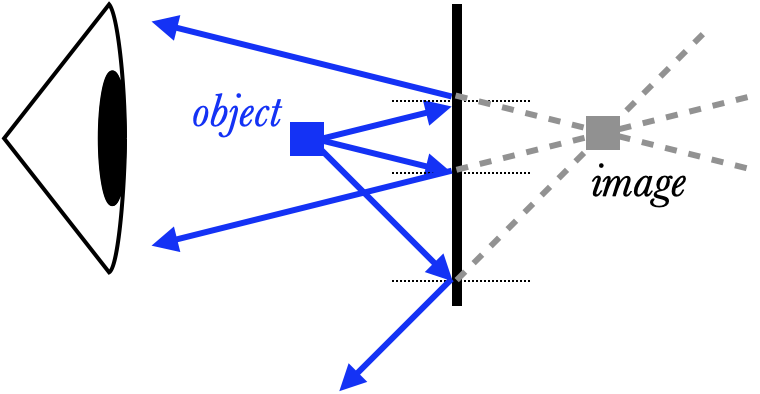Flat Mirror

Consider, for example, an object in front of a flat (or "plane") mirror. The rays of light emerge from the object, hit the surface of the mirror, and are reflected backwards according to the Law of Reflection . Our eye sees these reflected rays as diverging rays, and traces them back to a point: however, because our eye knows nothing of mirrors, it assumes these rays travelled in a straight line, and so traces them back to a point which is behind the mirror. Thus our eye sees an image of the object inside the mirror. This is an optical illusion so common and basic that we don't even think of it as an optical illusion!

In this figure we use a little geometry to learn more about the image. Let $d_o$ be the distance of the object to the mirror, and let $d_i$ be the distance of the image to the mirror. Draw two rays from the object, one perpendicular to the mirror, and one which hits the mirror at an angle $\theta_i$. By drawing the triangles shown, remembering a few things from geometry class like "corresponding angles" and "alternate interior angles", and noting that $\theta_r=\theta_i$ because of the law of reflection, we see that these two triangles share a side and have two angles in common, and are thus congruent with each other. That means that $$\abs{d_i}=\abs{d_o}\qquad \hbox{for a plane mirror}$$
(I'll explain the absolute value signs in Lens Equation.)
